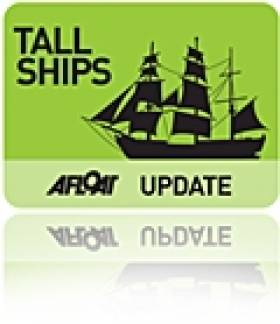Displaying items by tag: Alexander von Humboldt II
Alexander von Humboldt II' Christened in Bremerhaven, First Voyage in October
"We all are happy to send off "Alexander von Humboldt II" soon for its first major voyage", Willi Schäfer beams with joy. He is project manager for the ship's construction and chairman of the board of Deutsche Stiftung Sail Training (DSST). The charity DSST, owner and operator of "Alex II", will use the ship starting at the end of October to familiarize young people and people young at heart with traditional seamanship. Everybody can participate. The first winter voyage will see the three-masted ship sailing from Bremerhaven to several ports on the European continent, to Madeira and to the sailing area of the Canary Islands. The new year will see "Alex II" calling the Cape Verde Islands before it will sail to Ireland visiting Portugal on the way. The barque is expected back in its homeport of Bremerhaven in April 2012.
Diedrich Rickens, chief executive officer of DSST, rejoices about the new ship as well: "The old "Alexander von Humboldt" often did not have enough room to offer a bunk to all those interested in sailing her. The new ship can host a crew of 79, that means 20 people more than before." Rickens adds that "Alex II" fulfils international safety and security standards and is operated according to IMO regulations. That simplifies visits to countries like the USA.
Although a modern ship, "Alex II" offers traditional seafaring experience, says Reimer Peters of the project team: "This three-masted ship is new, but its construction is very traditional." As a proof in point Peters mentions the lowerable yardarms featured as well on the most legendary square riggers like "Passat" or "Gorch Fock". Lowerable yardarms make it possible to set the square sails by lifting up the round poles fixed horizontally to the mast.
Safety aspects are certainly not seen in a traditional way: the most modern equipment like electronic sea maps, satellite telephone and high speed work boats (RIB) are available to the crew in double format. Below deck it is much more comfortable than on an old traditional sailing ship: the crew is sleeping in air-conditioned 4-bunk-compartments with showers attached.
Manfred Hövener, who initiated the reconstruction of a lightship into the proud green square rigger „Alexander von Humboldt" in 1986, is happy about the successor as well: "Naturally I am a bit melancholic about the retirement of our old "Alex", but the new ship gives us so many more possibilities. And the most important thing is," adds DSST pioneer Hövener;" that the charitable cause of the foundation can be continued." He wishes that many more generations learn traditional seamanship on "Alexander von Humboldt II", form friendships and simply enjoy life. Just like it has been for the past 25 years on the old "Alex".
Ownership of „Alexander von Humboldt II", which was built at a price of 15 Mio Euro, will be transferred from the building shipyard BVT Brenn- und Verformtechnik Bremen GmbH to DSST at the beginning of October.
Before setting out for its first big winter voyage, training trips for the voluntary staff crew are on the schedule. Meanwhile, the old "Alex" will be retired by the foundation. Several potential buyers came forward, but for the time being the famous barque with the green sails will remain pier side in Bremerhaven. "We are not time-pressured to sell the old ship. The finance concept for the new build is secured without the sales profit", explains Wolfgang Arlt, chief financial officer of DSST.
By the way: "I would like to thank all those who supported the building of "Alexander von Humboldt II", stresses Willi Schäfer. "Only due to the donations in money and material by donors and sponsors we were able to realize the new build", he points out.
Technical Data Alexander von Humboldt II
Length 65 meters
width 10 meters
height main mast 33 meters over water surface
draught 5 meters
sail area 1,360 square meters, divided into 24 sails
engine power 550 kW
crew 79 sailors (among those 25 staff crew)
home port Bremerhaven
owner and operator Deutsche Stiftung Sail Training





























































